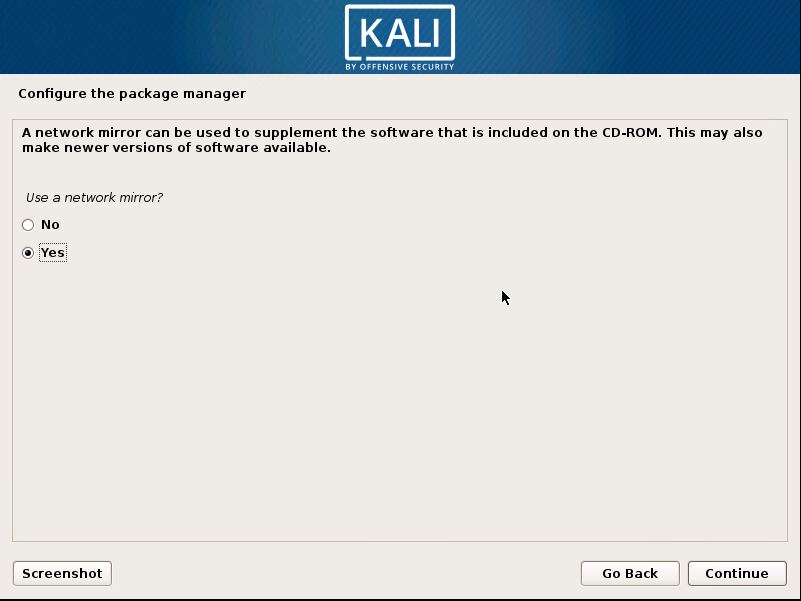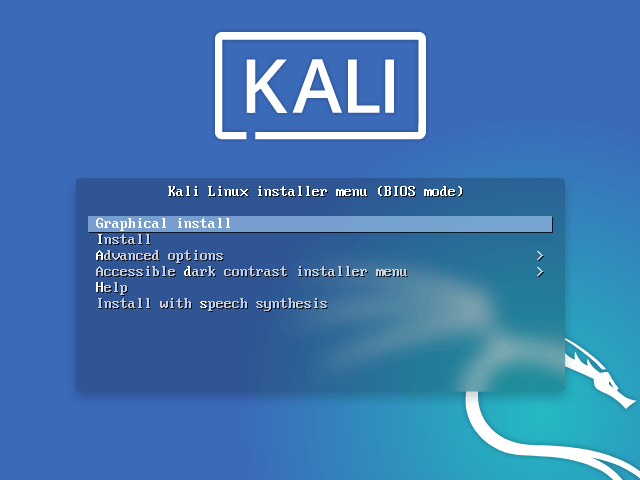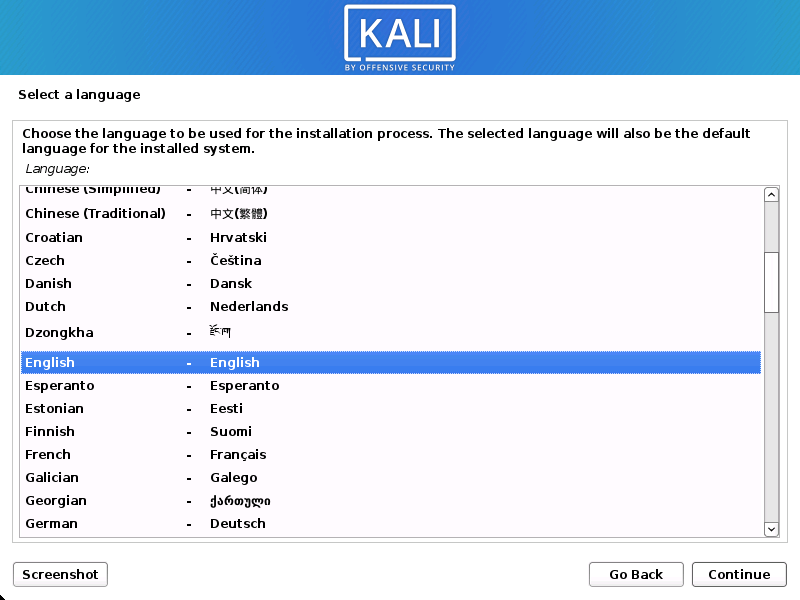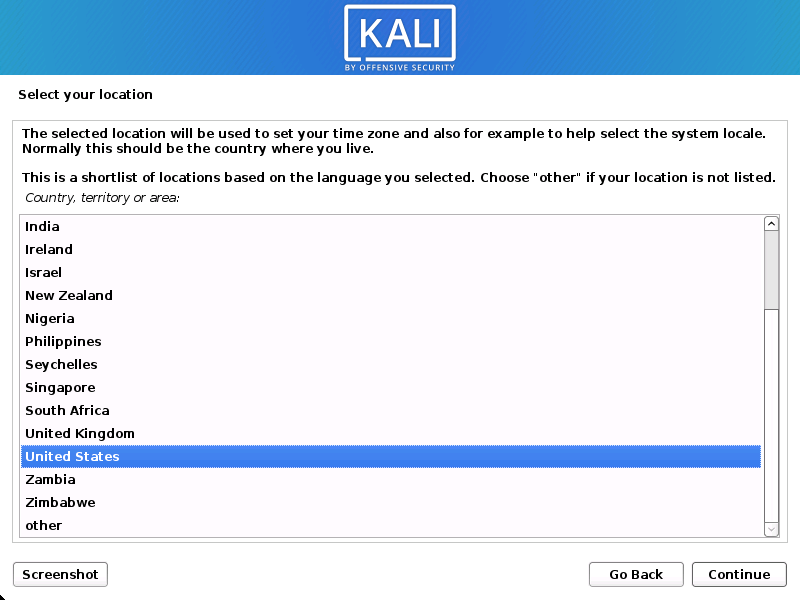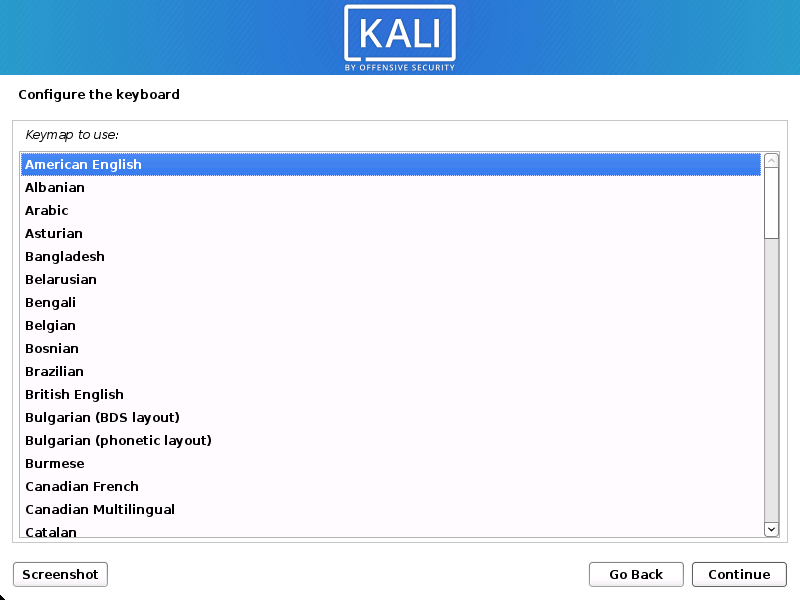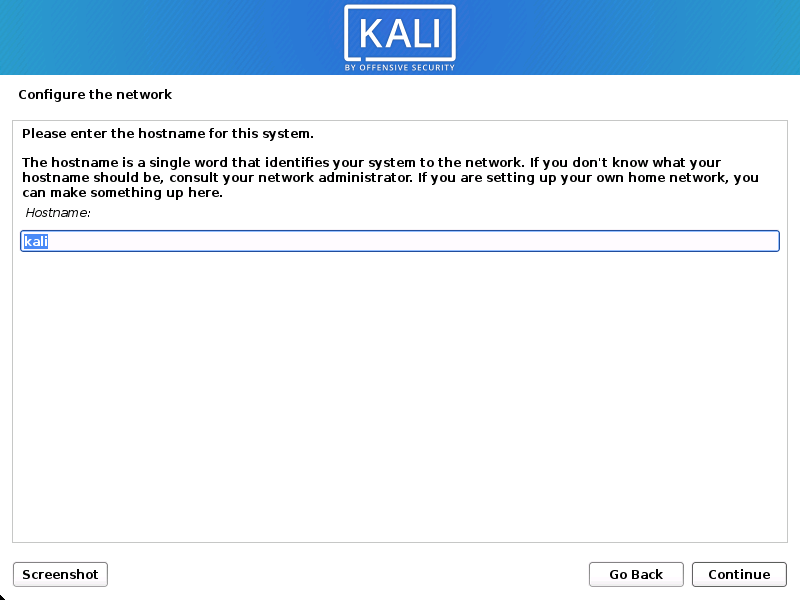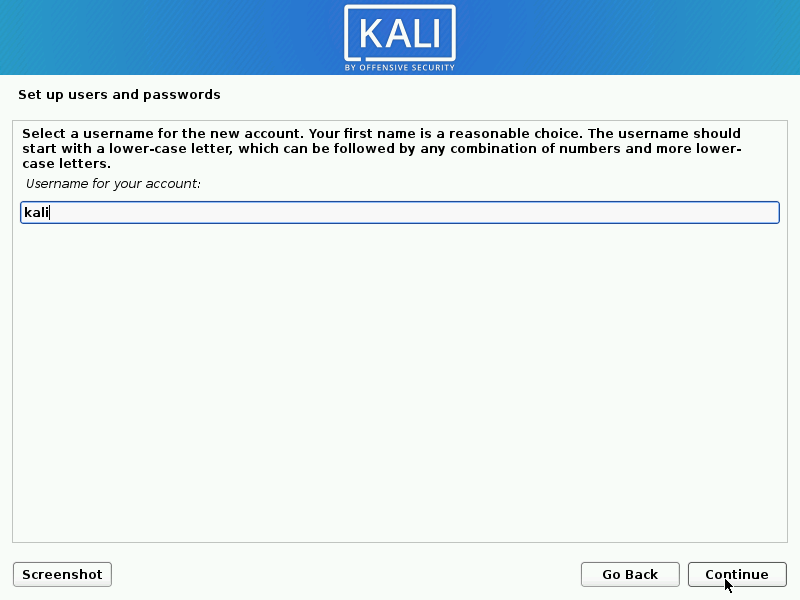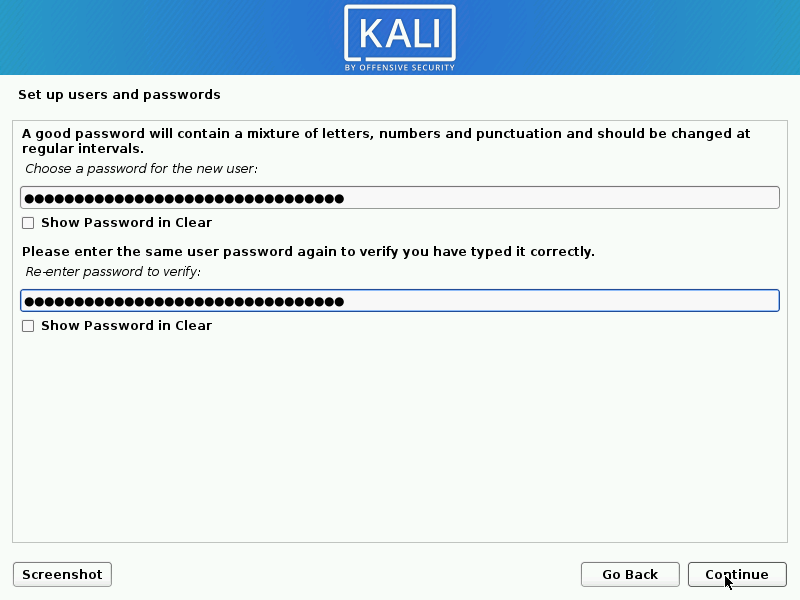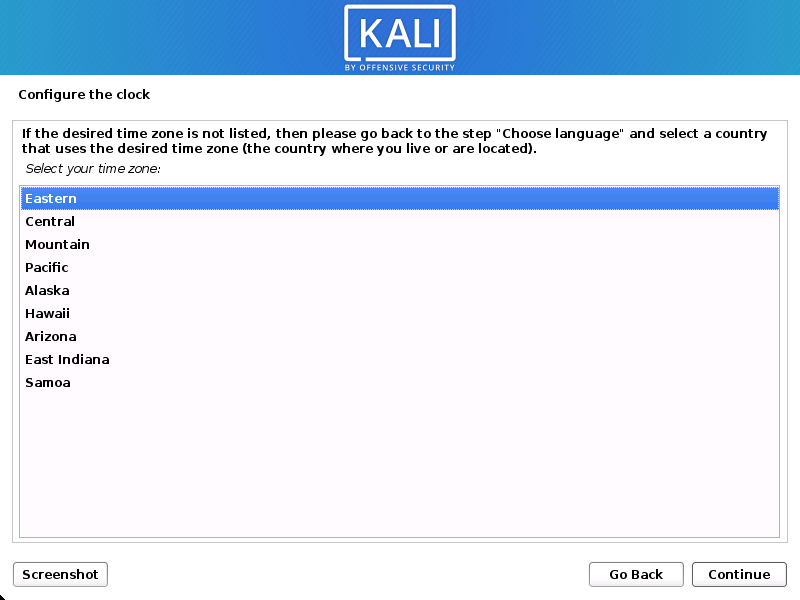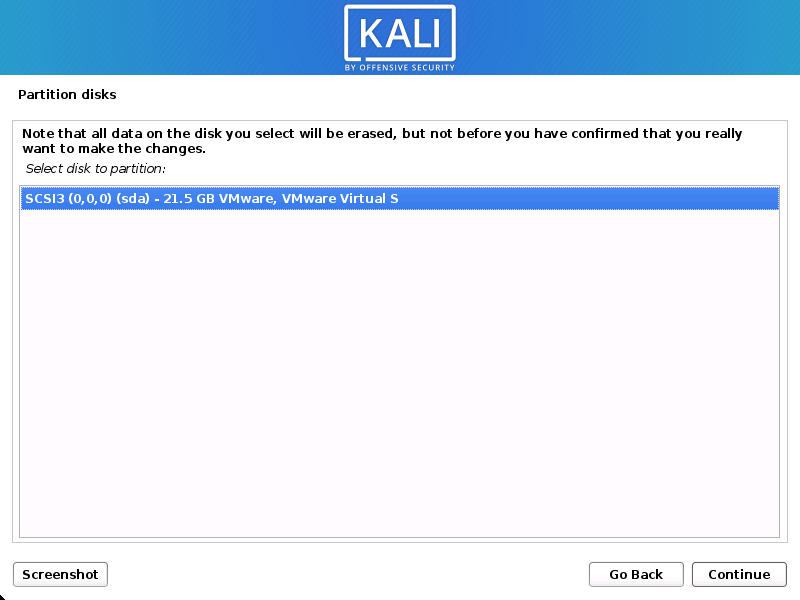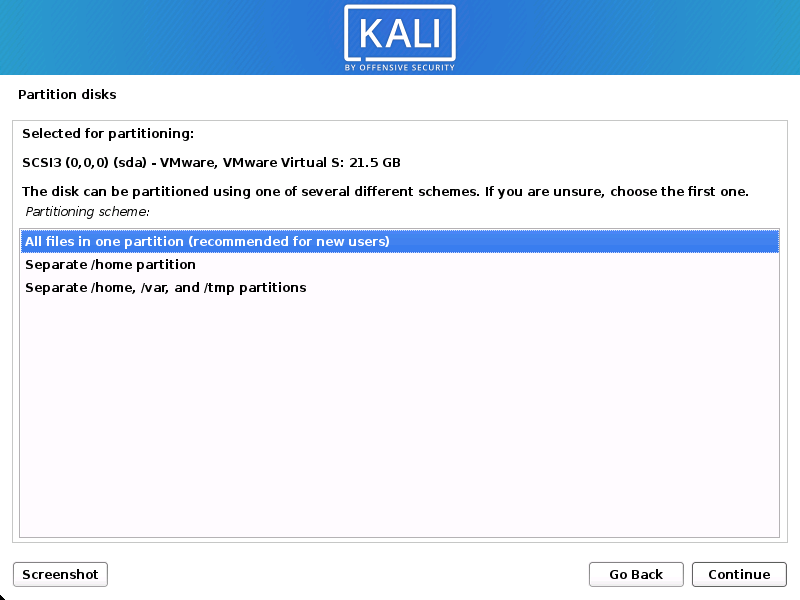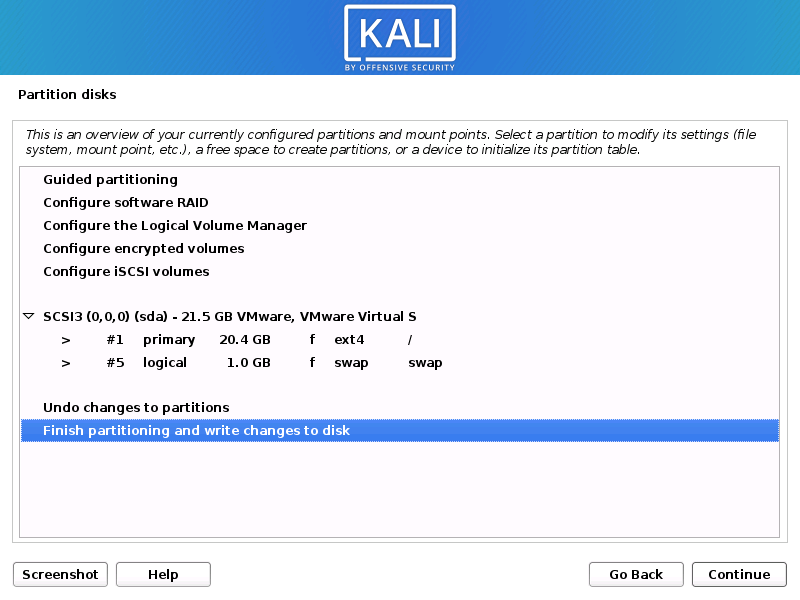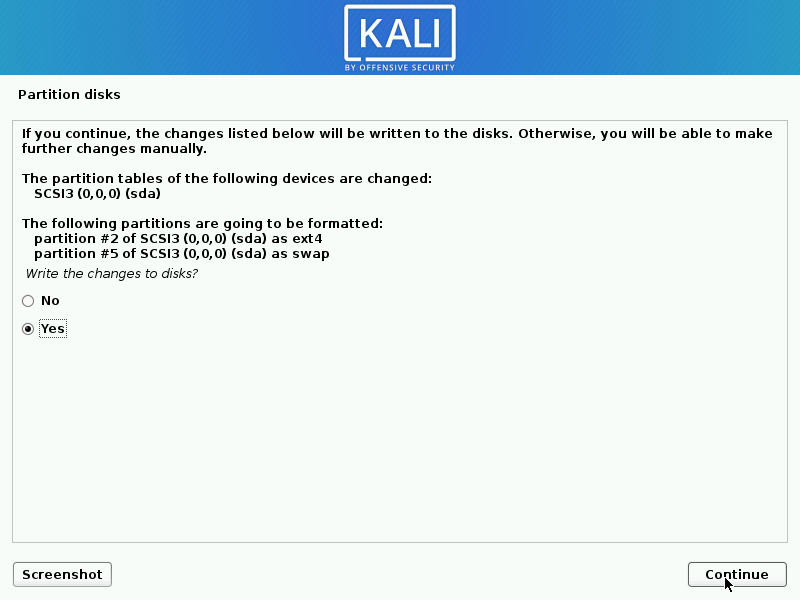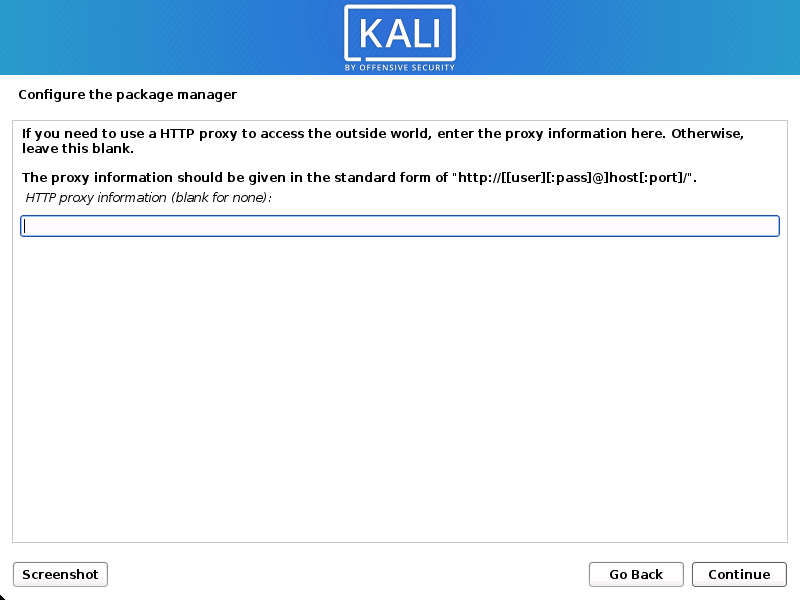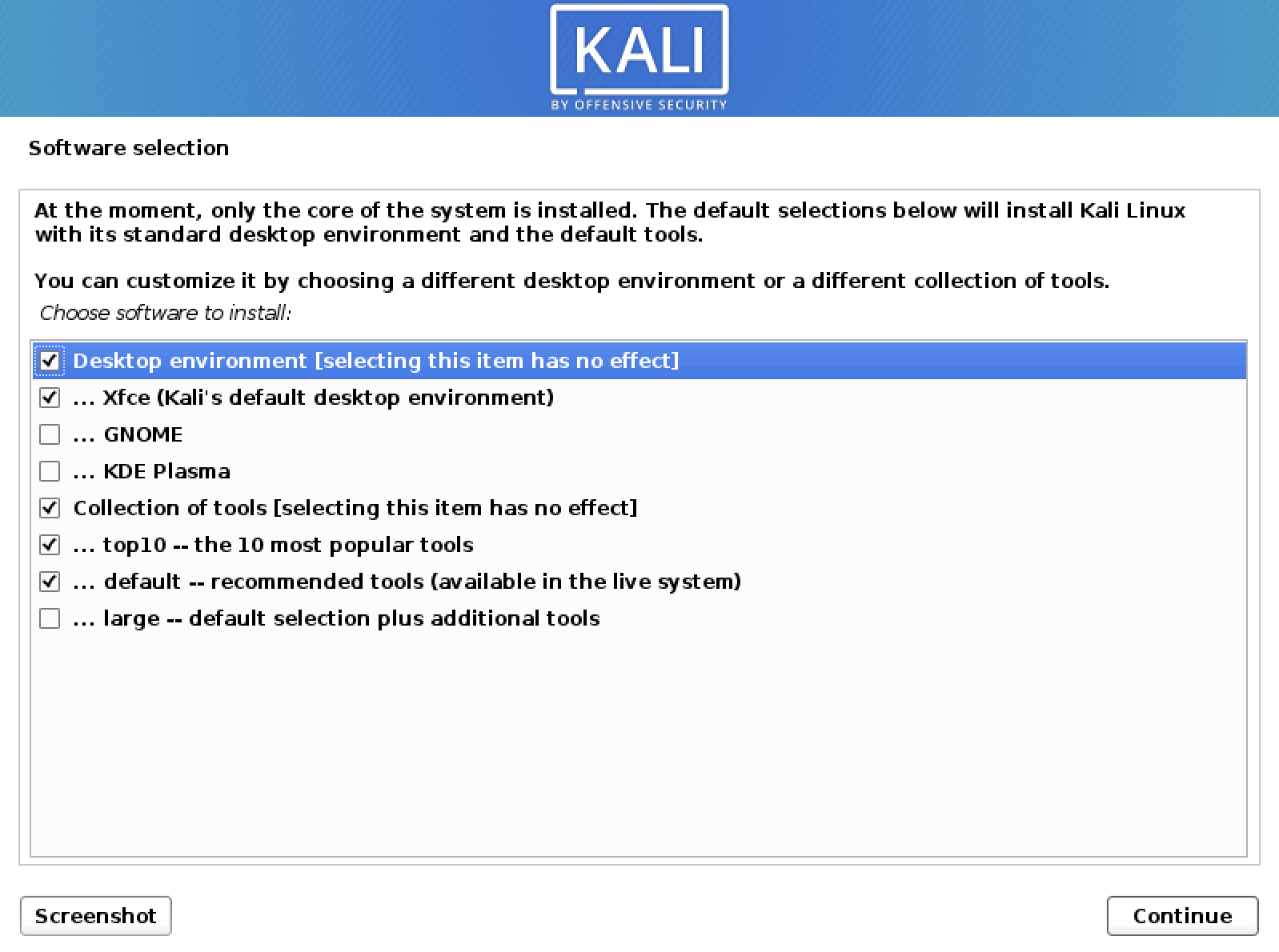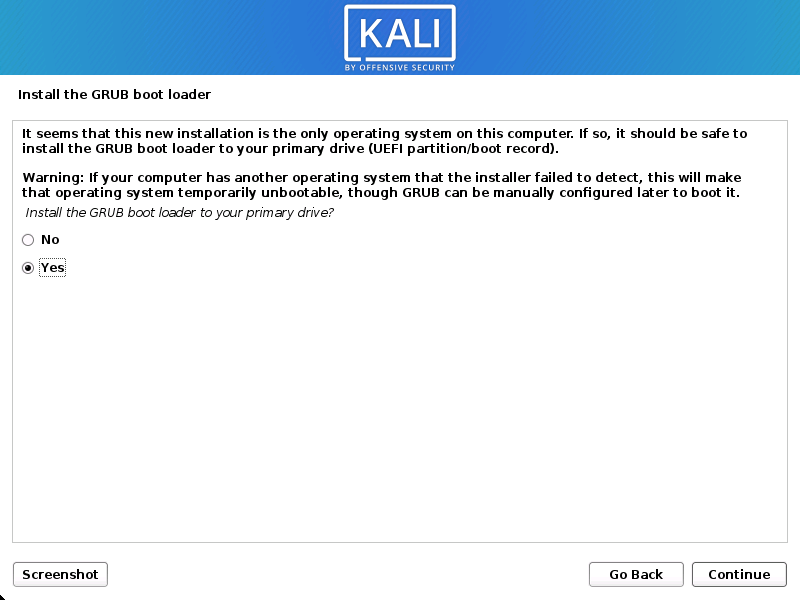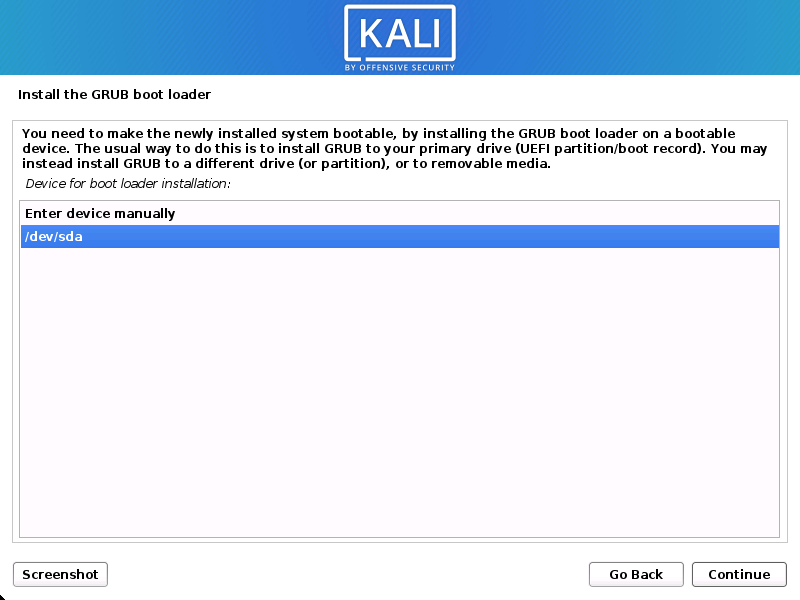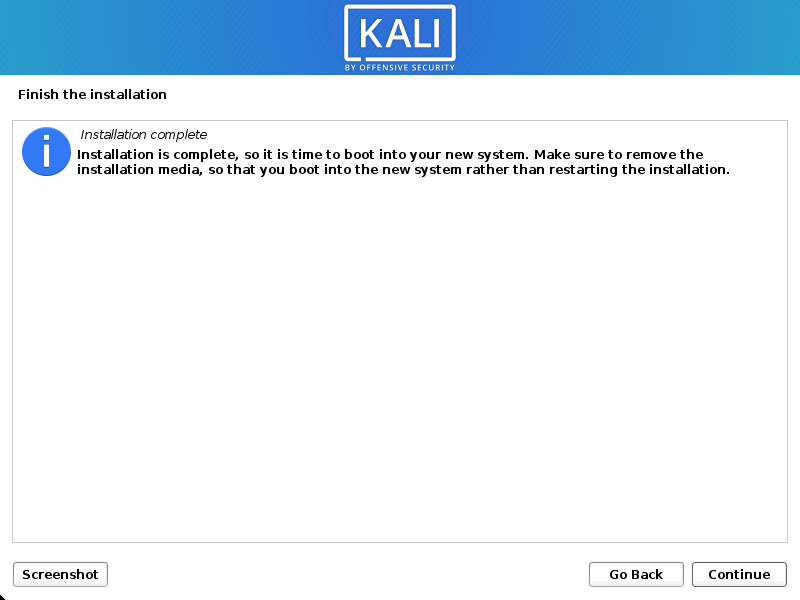- How To Install Kali Linux
- What is Kali Linux?
- Why Use Kali Linux?
- Kali Linux System Requirements
- How to Install Kali Linux
- Conclusion
- Kali linux system requirement
- System Requirements
- Installation Prerequisites
- Preparing for the Installation
- Kali Linux Installation Procedure
- Language
- Network
- User Accounts
- Clock
- Encrypted LVM
- Proxy Information
- Metapackages
- Boot Information
- Reboot
- Post Installation
How To Install Kali Linux
Kali Linux is a Debian-based Linux distribution aimed at advanced penetration testing and security auditing. In this tutorial, we will show you step-by-step how to install Kali Linux on your machine.
List of content you will read in this article:
There are many operating systems you could install on a computer or server. Some are better than others in certain tasks, for example, for graphics or content creation most professionals prefer macOS. When you think of web hosting, Linux is the go-to OS. For everyday office use and internet browsing, the majority of computer users would pick a Windows system.
In today’s article, we will discuss one such stylized operating system: Kali Linux, the default for computer hacking and working with network utilities. As a bonus, a detailed, step-by-step guide on how to install Kali Linux on your machine is also included.
What is Kali Linux?
Kali Linux is a Debian-based Linux distribution aimed at advanced penetration testing and security auditing. Kali contains several hundreds of tools which are geared towards various information security tasks, such as Penetration Testing, Security research, Computer Forensics, and Reverse Engineering. Kali Linux is developed, funded, and maintained by Offensive Security, a leading information security training company.
Why Use Kali Linux?
The operating system is made by penetration testers for pentesters and thus is specifically geared to meet the requirements of professional penetration testing. Here are some of them:
- Network services are disabled by default
- Custom upstream kernel patched for wireless injection
- Minimal and trusted set of repositories
For security reasons, Kali Linux, despite being open-source, is not a wide-open source software, meaning that the development team is small and trusted.
Kali Linux System Requirements
Before installing any software on your PC (or server), you need to know its system requirements and make sure that your device meets them.
- A minimum of 20 GB disk space for the Kali Linux install.
- Minimum 1GBof RAM, 2GB or more are recommended.
- CD-DVD Drive / USB boot support
Although most modern devices would definitely support this OS, it is always better to double-check. Such low system requirements also allow for easy installation within a virtual machine. This is actually recommended even for experienced Linux users (at least until they get used to the software).
How to Install Kali Linux
Step 1: First of all, download the Kali Linux ISO file and make a bootable USB or burn the iso file to a CD or a DVD.
Step 2: After your booting PC, VPS Server, or Dedicated Server, on the first page, you will be able to choose either Graphical or Text-Mode installation. In this example, we chose to install a GUI.
Step 3: Select your language.
Step 4: Specify your geographic location.
Step 5: Configure the keyboard.
In the following installation steps, you can configure the network settings. Kali will try to set network configuration through DHCP. If you don’t use DHCP in your network you will be presented with the following screen.
Step 6: Click on the Continue button.
On the following, you can choose an option to set the network configuration manually. Also, you can ignore configuring network settings by choosing Do not configure the network at this time.
Step 7: Select Configure network manually and click on the Continue button.
Step 7: On the next page, enter your IP address and click the Continue button.
Step 8: Enter Netmask and click on Continue.
Step 9: Enter your network’s router IP in the Gateway section.
Step 10: Also, you have to set the DNS address.
Step 11: On the next page enter your system name (Hostname).
Step 12: If you have a specific Kali Domain name you can enter that in this page.
Step 13: In the next step, you must choose a password for the root user.
Step 14: Select your Time Zone.
In this section, you will receive some suggestions for partitioning your hard disk.
Step 15: At this point, we use the Guided — use entire disk.
Step 16: On this page, choose the disk to be partitioned.
Depending on your needs, you can choose to keep all your files in a single partition or to have separate partitions for one or more of the top-level directories.
Step 17: If you’re not sure which option you want, select All files in one partition.
You will see partitioning and disk format at this page for the last time.
Step 18: Select Finish partitioning and write changes to disk and click on continue.
On this page, you will see the confirmation of the changes to disk.
Step 19: Choose Yes and click on Continue button.
In this section, you will create the connection settings for the Kali package. Please Note: if you select No, you will not be able to install packages from the Kali repository.
Step 20: Select Yes and click on Continue.
Step 21: On the next page install GRUB. To do so, select Yes and click on Continue.
Step 22: Finally, click on Continue to reboot.
You have installed Kali successfully. After the reboot, the screen should look like this if you chose the Graphical install in step 2.
Kali Linux can be installed on windows too, you can install it from the Windows store. Here’s a detailed blog on how to do just that.
Conclusion
In today’s article, we discussed about Kali Linux, what it could be used for, and the specific features that allow it to function within its niche. This was followed by the system requirements of the operating system and a step-by-step guide on how to install it on your machine.
If you have any questions or suggestions on how we could improve the article, please leave a comment down below.
Источник
Kali linux system requirement
Installing Kali Linux (single boot) on your computer is an easy process. This guide will cover the basic install (which can be done on bare metal or guest VM), with the option of encrypting the partition. At times, you may have sensitive data you would prefer to encrypt using Full Disk Encryption (FDE). During the setup process you can initiate an LVM encrypted install on either Hard Disk or USB drives.
First, you’ll need compatible computer hardware. Kali Linux is supported on amd64 (x86_64/64-Bit) and i386 (x86/32-Bit) platforms. Where possible, we would recommend using the amd64 images. The hardware requirements are minimal as listed in the section below, although better hardware will naturally provide better performance. You should be able to use Kali Linux on newer hardware with UEFI and older systems with BIOS.
Our i386 images, by default use a PAE kernel, so you can run them on systems with over 4 GB of RAM.
In our example, we will be installing Kali Linux in a fresh guest VM, without any existing operating systems pre-installed. We will explain other possible scenarios throughout the guide.
System Requirements
The installation requirements for Kali Linux will vary depending on what you would like to install and your setup. For system requirements:
- On the low end, you can set up Kali Linux as a basic Secure Shell (SSH) server with no desktop, using as little as 128 MB of RAM (512 MB recommended) and 2 GB of disk space.
- On the higher end, if you opt to install the default Xfce4 desktop and the kali-linux-default metapackage, you should really aim for at least 2 GB of RAM and 20 GB of disk space.
- When using resource-intensive applications, such as Burp Suite, they recommend at least 8 GB of RAM(and even more if it large web application!) or using simultaneous programs at the same time.
Installation Prerequisites
This guide will make also the following assumptions when installing Kali Linux:
- Using the amd64 installer image.
- CD/DVD drive / USB boot support.
- Single disk to install to.
- Connected to a network (with DHCP & DNS enabled) which has outbound Internet access.
We will be wiping any existing data on the hard disk, so please backup any important information on the device to an external media.
Preparing for the Installation
Download Kali Linux (We recommend the image marked Installer).
Burn The Kali Linux ISO to DVD or image Kali Linux Live to USB drive. (If you cannot, check out the Kali Linux Network Install).
Backup any important information on the device to an external media.
Ensure that your computer is set to boot from CD/DVD/USB in your BIOS/UEFI.
Kali Linux Installation Procedure
- To start your installation, boot with your chosen installation medium. You should be greeted with the Kali Linux Boot screen. Choose either Graphical install or Install (Text-Mode). In this example, we chose the Graphical install.
If you’re using the live image instead, you will see another mode, Live, which is also the default boot option.
Language
- Select your preferred language. This will be used for both the setup process and once you are using Kali Linux.
- Specify your geographic location.
- Select your keyboard layout.
Network
- The setup will now probe your network interfaces, looks for a DHCP service, and then prompt you to enter a hostname for your system. In the example below, we’ve entered kali as our hostname.
If there is no network access with DHCP service detected, you may need to manually configure the network information or do not configure the network at this time.
- If there isn’t a DHCP service running on the network, it will ask you to manually enter the network information after probing for network interfaces, or you can skip.
- If Kali Linux doesn’t detect your NIC, you either need to include the drivers for it when prompted, or generate a custom Kali Linux ISO with them pre-included.
- If the setup detects multiple NICs, it may prompt you which one to use for the install.
- If the chosen NIC is 802.11 based, you will be asked for your wireless network information before being prompted for a hostname.
- You may optionally provide a default domain name for this system to use (values may be pulled in from DHCP or if there is an existing operating systems pre-existing).
User Accounts
- Next, create the user account for the system (Full name, username and a strong password).
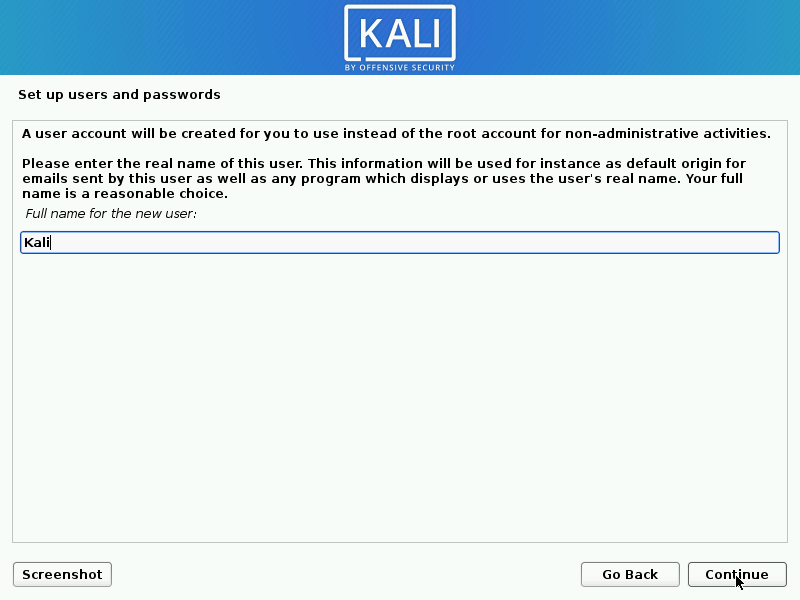
Clock
- The installer will now probe your disks and offer you various choices, depending on the setup.
In our guide, we are using a clean disk, so we have four options to pick from. We will select Guided — the entire disk, as this is the single boot installation for Kali Linux, so we do not want any other operating systems installed, so we are happy to wipe the disk.
If there is an pre-existing data on the disk, you will have have an extra option (Guided — use the largest continuous free space) than the example below. This would instruct the setup not to alter any existing data, which is perfect for for dual-booting into another operating system. As this is not the case in this example, it is not visible.
Experienced users can use the “Manual” partitioning method for more granular configuration options, which is covered more in our BTRFS guide.
If you want to encrypt Kali Linux, you can enable Full Disk Encryption (FDE), by selecting Guided — used entire disk and setup encrypted LVM. When selected, later on in the setup (not in this guide) prompt you to enter a password (twice). You will have to enter this password every time you start up Kali Linux.
- Select the disk to be partitioned.
- Depending on your needs, you can choose to keep all your files in a single partition — the default — or to have separate partitions for one or more of the top-level directories.
If you’re not sure which you want, you want “All files in one partition”.
- Next, you’ll have one last chance to review your disk configuration before the installer makes irreversible changes. After you click Continue, the installer will go to work and you’ll have an almost finished installation.
Encrypted LVM
If enabled in the previous step, Kali Linux will now start to perform a secure wipe of the hard disk, before asking you for a LVM password.
Please sure a strong password, else you will have to agree to the warning about a weak passphrase.
This wipe may take “a while” (hours) depending on the size and speed of the drive.
If you wish to risk it, you can skip it.
Proxy Information
- Kali Linux uses a central repository to distribute applications. You’ll need to enter any appropriate proxy information as needed.
Metapackages
If network access was not setup, you will want to continue with setup when prompt.
If you are using the Live image, you will not have the following stage.
- Next you can select which metapackages you would like to install. The default selections will install a standard Kali Linux system and you don’t really have to change anything here.
Please refer to this guide if you prefer to change the default selections.
Boot Information
- Next confirm to install the GRUB boot loader.
- Select the hard drive to install the GRUB bootloader in (it does not by default select any drive).
Reboot
- Finally, click Continue to reboot into your new Kali Linux installation.
Post Installation
Now that you’ve completed installing Kali Linux, it’s time to customize your system.
The General Use section has more information and you can also find tips on how to get the most out of Kali Linux in our User Forums.
Updated on: 2021-Sep-27
Author: gamb1t
Источник




















